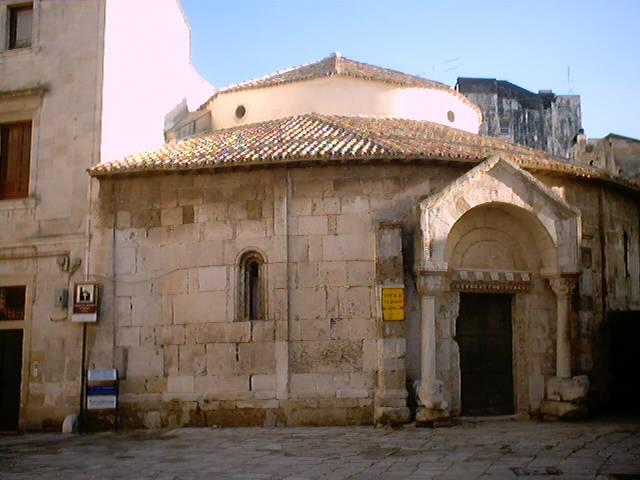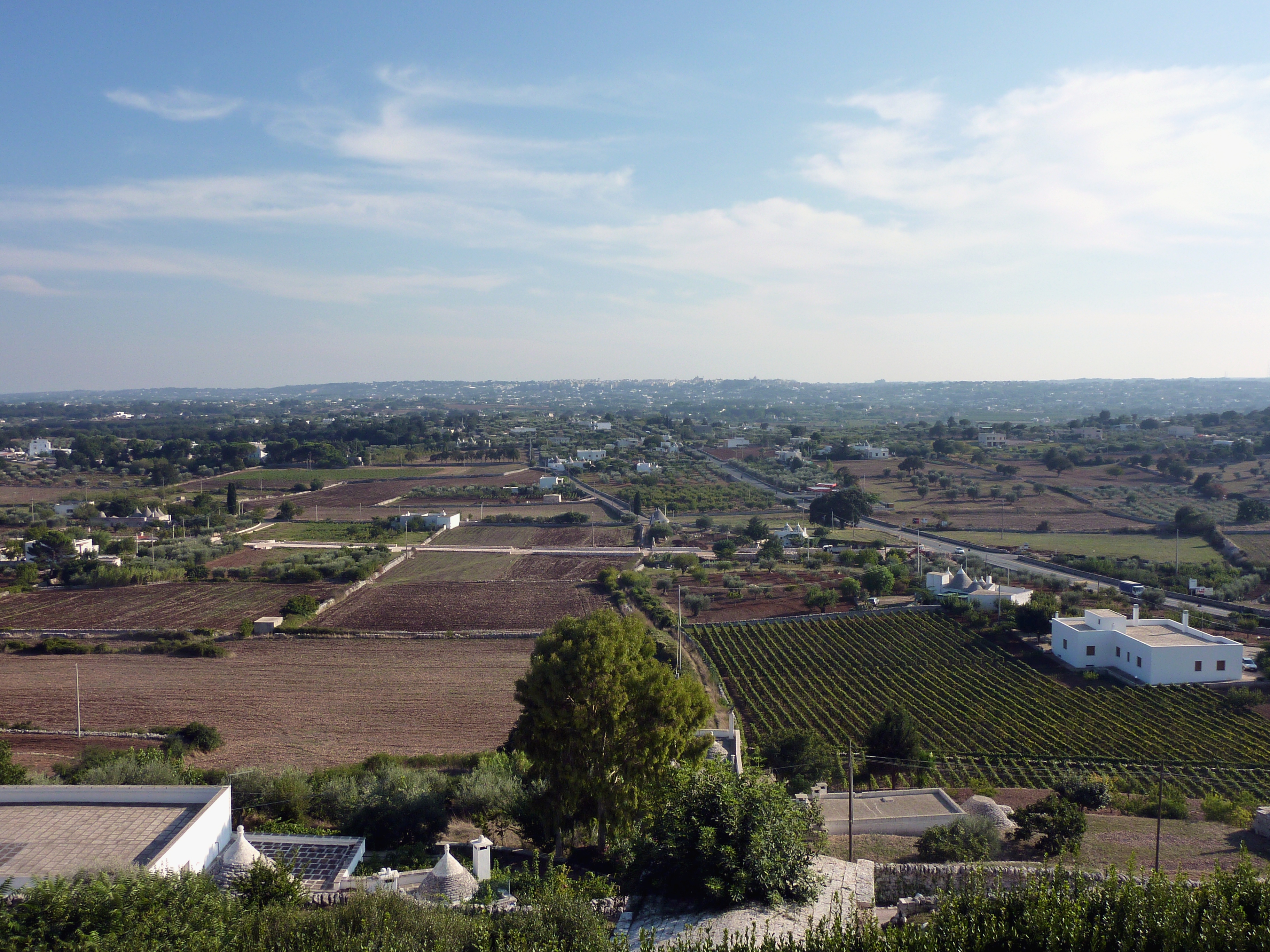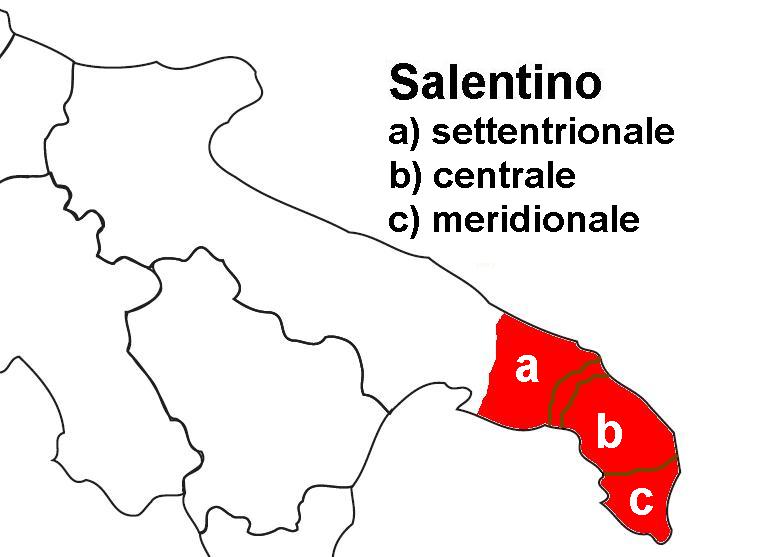|
Brindisi
Brindisi ( , ) ; la, Brundisium; grc, Βρεντέσιον, translit=Brentésion; cms, Brunda), group=pron is a city in the region of Apulia in southern Italy, the capital of the province of Brindisi, on the coast of the Adriatic Sea. Historically, the city has played an important role in trade and culture, due to its strategic position on the Italian Peninsula and its natural port on the Adriatic Sea. The city remains a major port for trade with Greece and the Middle East. Its industries include agriculture, chemical works, and the generation of electricity. The city of Brindisi was the provisional government seat of the Kingdom of Italy from September 1943 to February 1944. Geography Brindisi is situated on a natural harbour, that penetrates deeply into the Adriatic coast of Apulia. Within the arms of the outer harbour islands are Pedagne, a tiny archipelago, currently not open and in use for military purposes (United Nations Group Schools used it during the interventio ... [...More Info...] [...Related Items...] OR: [Wikipedia] [Google] [Baidu] |
Brindisi By Piri Reis
Brindisi ( , ) ; la, Brundisium; grc, Βρεντέσιον, translit=Brentésion; cms, Brunda), group=pron is a city in the region of Apulia in southern Italy, the capital of the province of Brindisi, on the coast of the Adriatic Sea. Historically, the city has played an important role in trade and culture, due to its strategic position on the Italian Peninsula and its natural port on the Adriatic Sea. The city remains a major port for trade with Greece and the Middle East. Its industries include agriculture, chemical works, and the generation of electricity. The city of Brindisi was the provisional government seat of the Kingdom of Italy from September 1943 to February 1944. Geography Brindisi is situated on a natural harbour, that penetrates deeply into the Adriatic coast of Apulia. Within the arms of the outer harbour islands are Pedagne, a tiny archipelago, currently not open and in use for military purposes (United Nations Group Schools used it during the intervention ... [...More Info...] [...Related Items...] OR: [Wikipedia] [Google] [Baidu] |
Brindisi Cattedrale
Brindisi ( , ) ; la, Brundisium; grc, Βρεντέσιον, translit=Brentésion; cms, Brunda), group=pron is a city in the region of Apulia in southern Italy, the capital of the province of Brindisi, on the coast of the Adriatic Sea. Historically, the city has played an important role in trade and culture, due to its strategic position on the Italian Peninsula and its natural port on the Adriatic Sea. The city remains a major port for trade with Greece and the Middle East. Its industries include agriculture, chemical works, and the generation of electricity. The city of Brindisi was the provisional government seat of the Kingdom of Italy from September 1943 to February 1944. Geography Brindisi is situated on a natural harbour, that penetrates deeply into the Adriatic coast of Apulia. Within the arms of the outer harbour islands are Pedagne, a tiny archipelago, currently not open and in use for military purposes (United Nations Group Schools used it during the intervention ... [...More Info...] [...Related Items...] OR: [Wikipedia] [Google] [Baidu] |
Province Of Brindisi
The Province of Brindisi ( it, Provincia di Brindisi) is a province in the Apulia region of Italy. Its capital is the city of Brindisi. It has an area of and a total population of 401,652 (2013). Geography The Province of Brindisi is situated in southeastern Italy, extending for , the second smallest province in the region after the Province of Barletta-Andria-Trani. It was established in 1927 from the ancient Terra d'Otranto. With the Adriatic Sea to the east, it is bordered to the north by the Province of Bari, on the west by the Province of Taranto and to the south-east by the Province of Lecce. The northern, central and western parts are hilly with much woodland, with the Murgia hills of particular note, while to the north-west, bordering on the provinces of Taranto and Bari, it is lower-lying, with the Itria Valley (Valle d'Itria). The maximum height reached within the province is above sea level, near Selva di Fasano. The other peaks are slightly lower and are all locate ... [...More Info...] [...Related Items...] OR: [Wikipedia] [Google] [Baidu] |
Riccardo Rossi (politician)
Riccardo Rossi (born 7 June 1964 in Trani) is an Italian politician. Rossi ran as an independent for the office of Mayor of Brindisi at the 2018 Italian local elections, supported by a centre-left coalition. He won and took office on 29 June 2018. He was elected President of the Province of Brindisi on 31 October 2018. See also *2018 Italian local elections *List of mayors of Brindisi The Mayor of Brindisi is an elected politician who, along with the Brindisi's City Council, is accountable for the strategic government of Brindisi in Apulia, Italy. The current Mayor is Giuseppe Marchionna, a centre-right independent, who took ... References External links * 1964 births Living people Mayors of Brindisi Presidents of the Province of Brindisi University of Bari alumni {{Italy-politician-stub ... [...More Info...] [...Related Items...] OR: [Wikipedia] [Google] [Baidu] |
Salento
Salento ( Salentino: ''Salentu'', Salentino Griko: ''Σαλέντο'') is a cultural, historical and geographic region at the southern end of the administrative region of Apulia in Southern Italy. It is a sub-peninsula of the Italian Peninsula, sometimes described as the "heel" of the Italian "boot". It encompasses the entire administrative area of the province of Lecce, a large part of the province of Brindisi and part of that of Taranto. The peninsula is also known as Terra d'Otranto, and in the past Sallentina. In ancient times it was called variously Calabria or Messapia. History Messapia (from Greek ''Μεσσαπία'') was the ancient name of a region of Italy largely corresponding to modern Salento. It was inhabited chiefly by the Messapii in classical times. Pokorny derives the toponym from the reconstructed PIE ''*medhyo-'', "middle" and PIE ''*ap-'', "water" (''Mess-apia'', "amid waters"). Pokorny compares the toponym ''Messapia'' to another ancient Italic toponym ... [...More Info...] [...Related Items...] OR: [Wikipedia] [Google] [Baidu] |
Adriatic Sea
The Adriatic Sea () is a body of water separating the Italian Peninsula from the Balkan Peninsula. The Adriatic is the northernmost arm of the Mediterranean Sea, extending from the Strait of Otranto (where it connects to the Ionian Sea) to the northwest and the Po Valley. The countries with coasts on the Adriatic are Albania, Bosnia and Herzegovina, Croatia, Italy, Montenegro, and Slovenia. The Adriatic contains more than 1,300 islands, mostly located along the Croatian part of its eastern coast. It is divided into three basins, the northern being the shallowest and the southern being the deepest, with a maximum depth of . The Otranto Sill, an underwater ridge, is located at the border between the Adriatic and Ionian Seas. The prevailing currents flow counterclockwise from the Strait of Otranto, along the eastern coast and back to the strait along the western (Italian) coast. Tidal movements in the Adriatic are slight, although larger amplitudes are known to occur occasi ... [...More Info...] [...Related Items...] OR: [Wikipedia] [Google] [Baidu] |
Via Appia
The Appian Way (Latin and Italian: ''Via Appia'') is one of the earliest and strategically most important Roman roads of the ancient republic. It connected Rome to Brindisi, in southeast Italy. Its importance is indicated by its common name, recorded by Statius, of ("the Appian Way, the queen of the long roads"). The road is named after Appius Claudius Caecus, the Roman censor who began and completed the first section as a military road to the south in 312 BC"Appian Way" in ''Chambers's Encyclopædia''. London: George Newnes, 1961, Vol. 1, p. 490. during the Samnite Wars. Origins The need for roads The Appian Way was a Roman road used as a main route for military supplies for its conquest of southern Italy in 312 BC and for improvements in communication. The Appian Way was the first long road built specifically to transport troops outside the smaller region of greater Rome (this was essential to the Romans). The few roads outside the early city were Etruscan and went mai ... [...More Info...] [...Related Items...] OR: [Wikipedia] [Google] [Baidu] |
Apulia
it, Pugliese , population_note = , population_blank1_title = , population_blank1 = , demographics_type1 = , demographics1_footnotes = , demographics1_title1 = , demographics1_info1 = , demographics1_title2 = , demographics1_info2 = , demographics1_title3 = , demographics1_info3 = , timezone1 = CET , utc_offset1 = +01:00 , timezone1_DST = CEST , utc_offset1_DST = +02:00 , postal_code_type = , postal_code = , area_code_type = ISO 3166 code , area_code = IT-75 , blank_name_sec1 = GDP (nominal) , blank_info_sec1 = €76.6 billion (2018) , blank1_name_sec1 = GDP per capita , blank1_info_sec1 = €19,000 (2018) , blank2_name_sec1 = HDI (2018) , blank2_info_sec1 = 0.845 · 18th of 21 , blank_name_sec2 = NUTS Region , blank_info_sec2 = ... [...More Info...] [...Related Items...] OR: [Wikipedia] [Google] [Baidu] |
Messapi
The Messapians ( grc, Μεσσάπιοι, Messápioi; la, Messapii) were a Iapygian tribe who inhabited Salento in classical antiquity. Two other Iapygian tribes, the Peucetians and the Daunians, inhabited central and northern Apulia respectively. All three tribes spoke the Messapian language, but had developed separate archaeological cultures by the seventh century BC. The Messapians lived in the eponymous region Messapia, which extended from Leuca in the southeast to Kailia and Egnatia in the northwest, covering most of the Salento peninsula. This region includes the Province of Lecce and parts of the provinces of Brindisi and Taranto today. Starting in the third century BC, Greek and Roman writers distinguished the indigenous population of the Salento peninsula differently. According to Strabo, the names ''Iapygians'', ''Daunians'', ''Peucetians'' and ''Messapians'' were exclusively Greek and not used by the natives, who divided the Salento in two parts. The southern and I ... [...More Info...] [...Related Items...] OR: [Wikipedia] [Google] [Baidu] |
Itria Valley
Itria Valley (in Italian: ''Valle d'Itria'') is an area located in Apulia region, in Southern Italy. Itria Valley spreads over Province of Bari, Province of Brindisi and Province of Taranto, and coincide with the lower part of Altopiano delle Murge, Murgia upland (Low Murgia). The towns of Martina Franca, Locorotondo, Cisternino and Ceglie Messapica overlook Itria Valley. "Valley" is an inaccurate term, because Itria Valley has not the typical conformation of mountain area valleys: it is just a depression due to karstic phenomena. History Itria Valley place-name is probably derived from Basilian Fathers oriental cult of the ''Madonna Odegitria'' (that is the Virgin Mary who shows the way), patron of wayfarers, which founded - using a natural shelter right in Itria Valley - a monastic site where a fresco portraying the ''Madonna Odegitria'' was found. Over the ruins of this medieval place of worship, located in Martina Franca, the Capuchin Monastery (in Italian: ''Convento dei Cappu ... [...More Info...] [...Related Items...] OR: [Wikipedia] [Google] [Baidu] |
Theodore Of Amasea
: ''For another Saint Theodore, see: Theodore Stratelates or Saint Theodore (other)''. Saint Theodore Tiron ( grc-gre, Ἅγιος Θεόδωρος Τήρων) is one of the two recognized saints called Theodore who are venerated as warrior saints and Great Martyrs in the Catholic Church, Oriental Orthodox Churches and Eastern Orthodox Churches. The other saint of the same name is Theodore Stratelates, also known as Theodore of Heraclea, but this second St Theodore may never have had a separate existence. When the epithet is omitted, the reference is usually to St Theodore Tiron. He is also known as Theodore Tyron ( grc-gre, ὁ Τήρων, variously romanized ''Tyro'' 'n'' ''Tiro'' 'n'' ''Teron''). ''Tīrō'' is a word from classical Latin meaning a "recently enlisted soldier or recruit". The Latin word was transliterated into Greek with various spellings (Τύρων, Τίρων, Τήρων or Τείρων). Life and martyrdom The veneration of St. Theodore is at ... [...More Info...] [...Related Items...] OR: [Wikipedia] [Google] [Baidu] |
Salentino
Salentino () is a dialect of the Extreme Southern Italian ( in Italian) spoken in the Salento peninsula, which is the southern part of the region of Apulia at the southern "heel" of the Italian peninsula. Overview Salentino is a dialect of the Extreme Southern Italian language group (in Italian ''Italiano meridionale estremo''). It is thus closer to the Southern Calabrian dialect and the dialects of Sicily than to the geographically less distant dialects of central and northern Apulia. The traditional areas where Salentino is spoken are the aforementioned Province of Lecce, much of the southern part of the province of Brindisi, and the southern part of Taranto province. History The Salentino dialect is a product of the different powers and/or populations that have had a presence in the peninsula over the centuries: indigenous Messapian, Ancient Greek, Roman, Byzantine Greek, Lombard, French and Spanish influences are all, to differing levels, present in the modern dialec ... [...More Info...] [...Related Items...] OR: [Wikipedia] [Google] [Baidu] |


.jpg)




